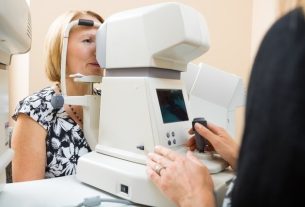The main symptoms of gonorrhea are pain or burning when urinating, discharge of yellowish-white secretion from the urethra, vagina or anus, pain in the abdomen, swelling in the testicles, sore throat or itching in the anus, for example.
Gonorrhea is a sexually transmitted infection (STI) caused by the bacteria Neisseria gonorrhoeae, which can affect men and women, being transmitted through sexual intercourse without a vaginal, anal or oral condom, with an infected person, but it can also be transmitted from mother to baby during childbirth. Understand how you get gonorrhea.
It is important to consult a gynecologist, urologist, infectious disease specialist or general practitioner as soon as symptoms of female or male gonorrhea appear, so that it can be diagnosed and treatment can be started, which normally involves the use of antibiotics.

The symptoms of gonorrhea vary according to the person’s gender or affected location, the main ones being:
Symptoms of female gonorrhea
The main symptoms of female gonorrhea are:
- Yellowish-white vaginal discharge, similar to pus;
- Pain or burning when urinating;
- Pelvic or abdominal pain;
- Swelling and pain in the vaginal lips;
- Formation of a vaginal abscess, due to inflammation of the Bartholin glands;
- Bleeding outside the menstrual period;
- Pain during intimate contact;
- Burning sensation or discomfort in the genital region.
In most women, gonorrhea does not cause any symptoms and is only identified during routine gynecological examinations.
However, a woman may present symptoms of female gonorrhea, which generally appear after 10 days of contact with the bacteria.
It is important to consult a gynecologist whenever symptoms of female gonorrhea appear, as it can cause complications if left untreated, such as pelvic inflammatory disease (PID) and infertility, as well as increasing the risk of ectopic pregnancy or pregnancy complications.
Symptoms of male gonorrhea
The main symptoms of gonorrhea in men are:
- Swelling or pain in the testicles;
- Outflow of white, yellowish or greenish secretion from the penis;
- Pain or burning when urinating.
In men, symptoms of male gonorrhea appear a few days after unprotected sexual contact.
Online symptom test
To find out what your chances of having gonorrhea are, please indicate your symptoms below:
This test is just a guidance tool. Therefore, it is not intended to provide a diagnosis and does not replace consultation with a gynecologist, urologist, infectious disease specialist or general practitioner.
Symptoms of gonorrhea in the mouth
Symptoms of oral gonorrhea are:
- Itching, irritation or swelling in the throat;
- Sore throat;
- Burning sensation in the throat or mouth;
- Wounds or ulcers in the mouth or throat;
- Difficulty swallowing;
- Change in voice;
- White spots in the mouth or throat.
These symptoms arise due to the transmission of bacteria Neisseria gonorrhoeae through unprotected oral sex with an infected person.
The symptoms of oropharyngeal gonorrhea are very similar to streptococcal pharyngitis, and it is important to consult a general practitioner, otorhinolaryngologist or infectious disease specialist if symptoms appear, so that they can be diagnosed and treatment can be started.
Anal gonorrhea symptoms
The main symptoms of gonorrhea in the anus are:
- Itching in the anus;
- Pus-like secretion;
- Pain when defecating;
- Bright red blood on the toilet paper.
The symptoms of gonorrhea in the anus can arise due to infection through unprotected anal sex, which can affect men, especially those who are receptive to anal sex, or women.
Symptoms of gonorrhea in babies
The main symptoms of gonorrhea in newborns are:
- Eye pain;
- Swelling in the eyelids;
- Toes near the ears;
- Purulent discharge in the eye;
- Difficulty opening your eyes
Gonorrhea in babies, also called neonatal gonorrhea, is transmitted from mother to newborn during birth, causing gonococcal conjunctivitis, which if not treated quickly, can lead to blindness. See the risks of gonorrhea during pregnancy.
How to know if I have gonorrhea
To find out if you have gonorrhea, it is recommended to consult a gynecologist, in the case of women, or a urologist in the case of men, so that a physical examination and laboratory tests can be carried out.
Therefore, the doctor must collect a sample of vaginal, urethral, anal, oral or ocular discharge or secretion, to be analyzed in the laboratory and confirm the presence of the bacteria. Neisseria gonorrhoeae.
After confirming the diagnosis of gonorrhea, the doctor must recommend treatment, which is usually done with antibiotics. See how gonorrhea is treated.
Read too: Home treatments for gonorrhea
What color is gonorrhea discharge?
Gonorrhea discharge is yellowish-white, having a pus-like appearance, which can be present in the vagina, penis, throat, anus or eyes.
In men, it can also be greenish coming out into the penis through the urethra.
Read too: How to cure gonorrhea

Sign up for our newsletter and stay up to date with exclusive news
that can transform your routine!
Warning: Undefined array key "title" in /home/storelat/public_html/wp-content/plugins/link-whisper-premium/templates/frontend/related-posts.php on line 12
Warning: Undefined array key "title_tag" in /home/storelat/public_html/wp-content/plugins/link-whisper-premium/templates/frontend/related-posts.php on line 13



